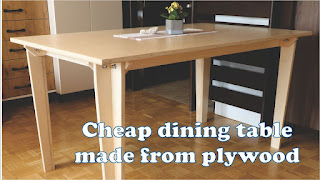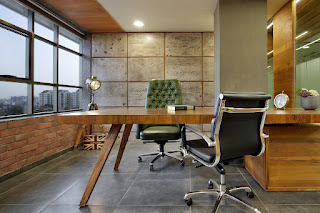Designing Your Dream Furniture: A SketchUp Guide
So, you've got this amazing vision for a custom piece of furniture – maybe a sleek modern bookshelf, a rustic farmhouse table, or a whimsical kids' bed. But where do you even begin? Don't worry, you don't need to be a seasoned carpenter or architect to bring your ideas to life. With SketchUp, a powerful yet user-friendly 3D modeling program, you can design your dream furniture from the comfort of your home, tweaking and perfecting until it's exactly right.
This guide will walk you through the process, from initial brainstorming to generating detailed plans you can take to a builder or even use for your own DIY project. Let's dive in!
1. Gathering Inspiration and Defining Your Needs
Before you even open SketchUp, it's crucial to have a solid understanding of what you want to create. This stage is all about brainstorming and clarifying your vision. Think about these key aspects:
1.1 Functionality: What will your furniture do?
What's the purpose of your piece? Is it for storage? Seating? Display? How many people will it accommodate? What kind of items will it hold (if applicable)? Understanding the function informs the design significantly. A bookshelf needs open shelves, a coffee table needs a flat, sturdy top, and a rocking chair needs, well, rocking capabilities!
1.2 Style: What aesthetic are you aiming for?
Browse online for inspiration – Pinterest, Instagram, and even furniture websites are goldmines of ideas. Do you prefer modern minimalism, rustic charm, mid-century modern, or something else entirely? Consider the overall style of your home and how the new piece will fit in. SketchUp allows for incredible stylistic freedom, so don't be afraid to experiment!
1.3 Dimensions: How big should it be?
Measure the space where your furniture will live! This is absolutely critical. Nothing's worse than designing a gorgeous piece that simply won't fit. Note down accurate measurements of the room, any existing furniture, and the available space for your new creation. SketchUp lets you create to scale, making this process incredibly precise.
1.4 Materials: What will it be made of?
Consider the durability, cost, and aesthetic appeal of different materials. Will it be wood, metal, fabric, or a combination? Think about the specific type of wood (oak, pine, etc.) and its potential finish. These choices will influence both the design and the construction process.
2. SketchUp: Getting Started
Now for the fun part! Download and install SketchUp (there's a free version available). Don't be intimidated; the interface is surprisingly intuitive. Here's a quick overview of the process:
2.1 Creating a New Model
Open SketchUp and start a new model. You'll be presented with a blank 3D canvas. Don't worry about making mistakes; you can always undo or redo steps.
2.2 Using the Tools
SketchUp provides a variety of tools to create shapes and manipulate them. You'll primarily use tools like the Line tool, Rectangle tool, Push/Pull tool (to give shapes depth), and Move tool. Experiment with them – it's the best way to learn! There are tons of tutorials available online if you get stuck.
2.3 Working with Components
One of SketchUp's greatest strengths is its component system. Create components for recurring elements like legs, drawers, or shelves. This way, if you need to make changes, you only have to modify the component once, and all instances will update automatically. It makes the design process significantly more efficient and cleaner.
2.4 Adding Dimensions
Always add dimensions to your model. This is crucial for accuracy. Use SketchUp's built-in dimensioning tools to clearly label the length, width, and height of every part of your furniture. This ensures that your design is buildable and avoids surprises during construction.
2.5 Using Styles and Materials
SketchUp allows you to apply various materials and styles to your model, giving it a more realistic look. This is where you can experiment with different wood grains, paint colors, and metal finishes. It helps you visualize the final product much more effectively.
3. Iterating and Refining Your Design
This is where the magic happens. Don't expect to create a perfect design on your first attempt. Experiment! Try different shapes, sizes, and materials. Use SketchUp's ability to rotate and zoom to view your design from all angles. Ask yourself: Does it look good? Does it feel functional? Does it fit the space?
Iterate on your design based on your answers. SketchUp's ease of use makes this experimentation process effortless. You can easily modify dimensions, add or remove features, and change materials until you are completely satisfied with the look and functionality of your design.
4. Generating Your Plans
Once you're happy with your 3D model, it's time to generate detailed plans. SketchUp allows you to create different views of your model – top views, side views, and detailed sections. These views will serve as your blueprint for construction.
You might need to generate separate drawings for different parts of your furniture (e.g., separate drawings for the legs, the top, the drawers). Make sure the dimensions are clearly labeled on each view.
5. Taking Your Plans to the Next Step
Now you have your plans! You can use them in several ways:
- DIY Project: If you're handy, you can build the furniture yourself. Your SketchUp plans will guide you through the process.
- Hire a Carpenter: Provide your detailed plans to a local carpenter or furniture maker for construction.
- 3D Printing (for smaller components): For smaller, more intricate parts, 3D printing can be a useful option.
Commonly Asked Questions
Q: Do I need any prior experience with 3D modeling?
A: No, SketchUp is designed to be user-friendly, even for beginners. There are plenty of online tutorials and resources to help you get started.
Q: Is SketchUp free?
A: Yes, there's a free version of SketchUp available, which is more than sufficient for most furniture design projects.
Q: How long does it take to design a piece of furniture in SketchUp?
A: It depends on the complexity of the design. A simple piece might take a few hours, while a more intricate one could take several days or even weeks.
Q: What if I make a mistake in SketchUp?
A: Don't worry! SketchUp makes it easy to undo or redo steps. You can also easily modify and adjust your design at any stage.
Q: Can I share my SketchUp designs with others?
A: Yes, you can export your designs in various formats (like images or 3D models) to share with carpenters, friends, or family.
Designing custom furniture with SketchUp is a rewarding experience. It allows you to bring your unique vision to life, combining creativity with precision. So, start sketching, and get ready to create something truly special!
























